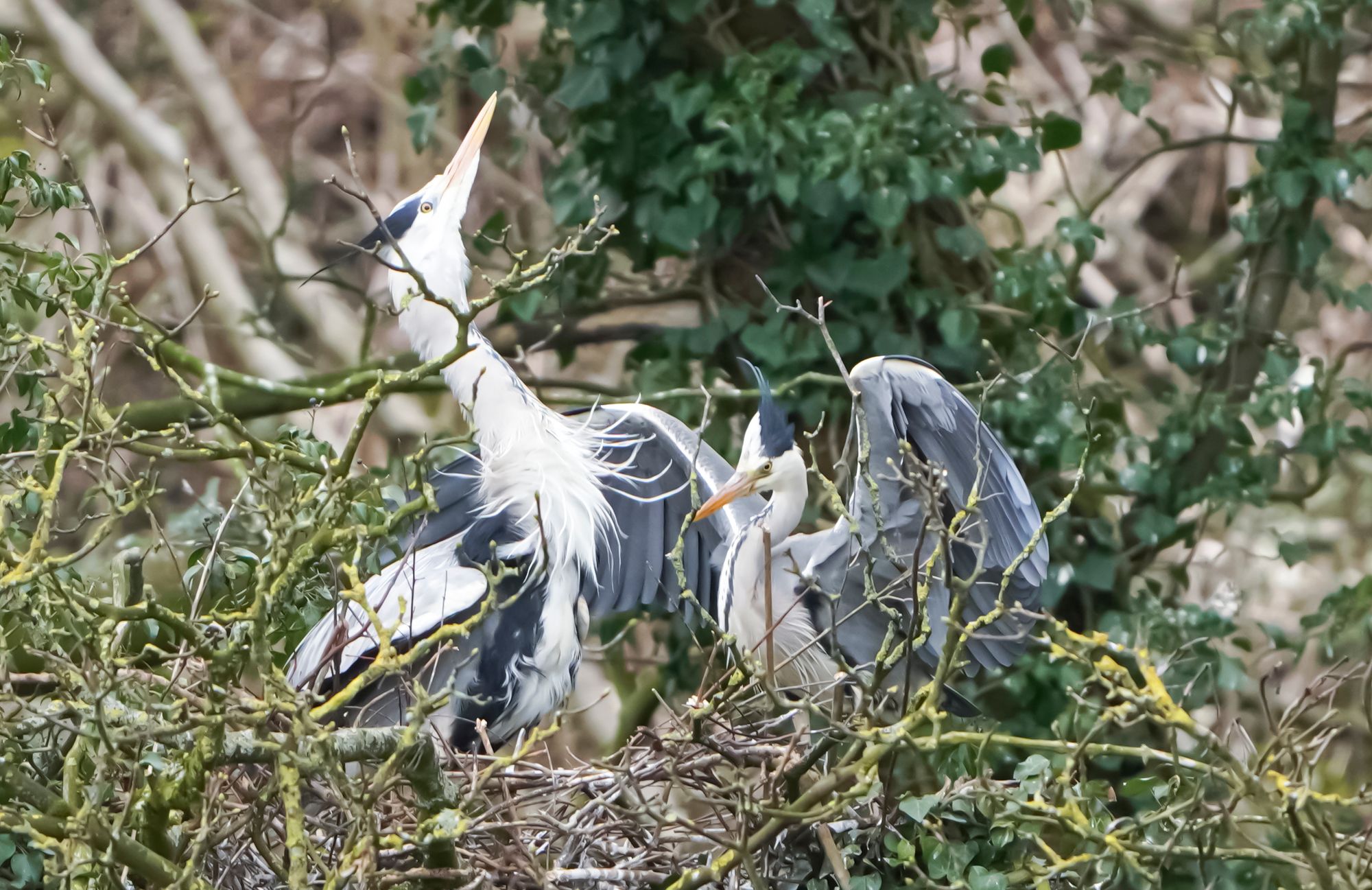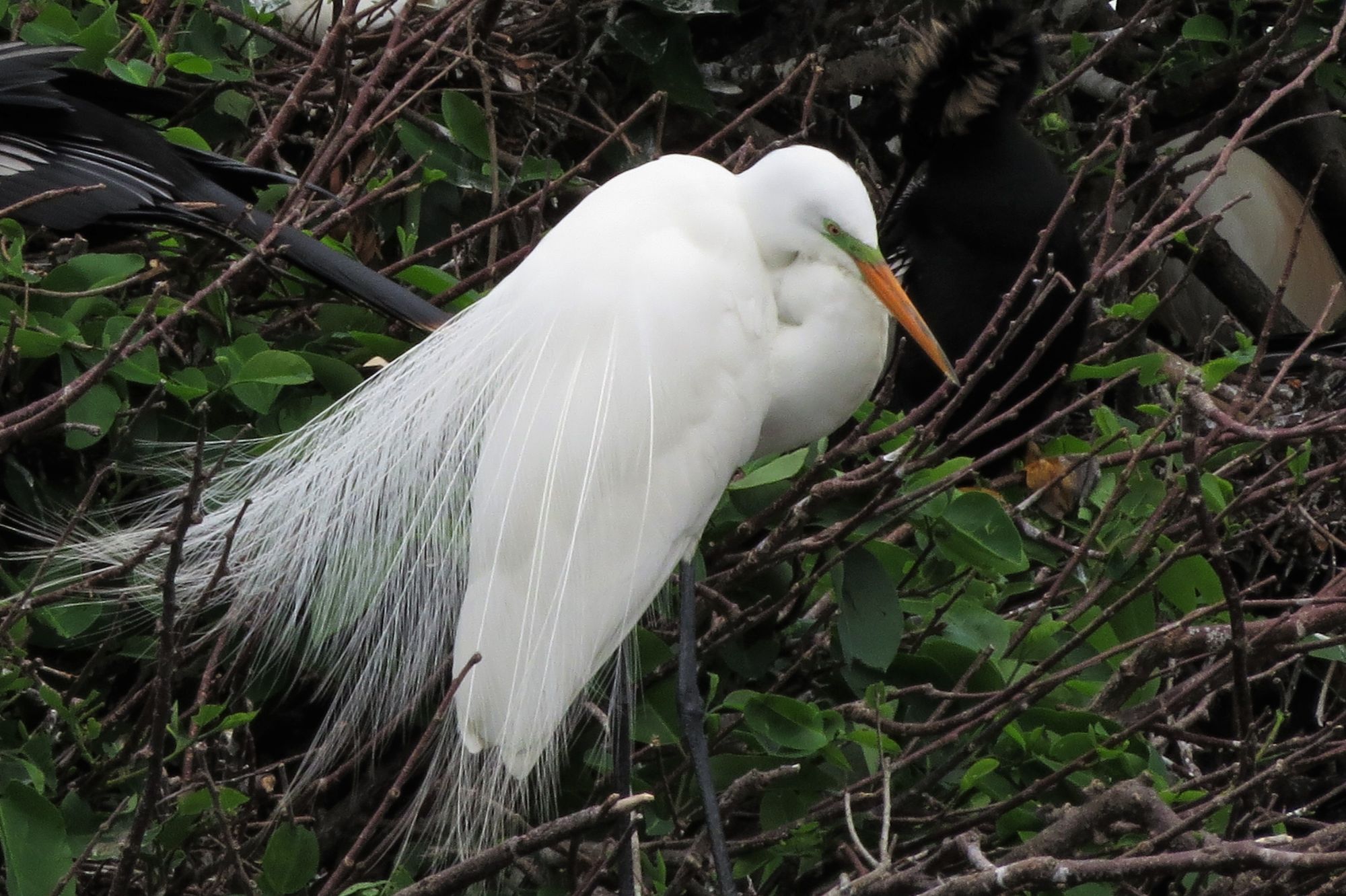
Have you been paying attention to the birds recently? If so, you might have noticed that their behavior has shifted a bit. That’s because the time of year is mating season for most birds in south Florida.
In particular, our wading birds (like herons and egrets), undergo some remarkable physical as well as behavioral shifts during this time. Many species of birds have alternative ‘breeding plumage’. These are feathers that grow in for the courtship process and fall out after they have served that function. These tend to be showy and bright, a way of advertising an individual fitness as a potential mate. The area around the eyes also tends to get brighter at this time.

In fact, the showiness of these feathers almost led to the extinction of those very same wading birds. Breeding plumage was particularly popular for use in millinery (hat-making) and various species were hunted for it. While many bird populations have recovered more recently after the institution of protective laws and grassroots campaigns against the use of feathers in women’s hats, others such as the whooping crane, Grus americana are still considered endangered because of the additional pressure of habitat loss.
Once a bird has found a suitable mate, the pair will begin nest construction. Each type of bird has its own needs and preferences for both location and material. For example, bald eagles, Haliaeetus leucocephalus, prefer to have cover for their nests and so choose evergreen trees that keep their foliage year round. In contrast, another bird of prey the osprey, Pandion haliaetus, likes to have unobstructed site lines. This means it tends to build nests in snags (a term for dead trees). This tendency is why you will also often see osprey nests on top of man-made structures like light poles and waterway channel markers. These preferences also mean the two species don’t compete with each other for nesting space.

While birds of prey tend to nest solo, water birds such as herons, egrets, and ibises will often congregate on islands that we call rookeries. These provide a modicum of safety to both the eggs and hatchlings from mammalian predators such as raccoons and foxes, especially if an alligator has taken up residence in the area.
There are a number of places in the area that provide an excellent opportunity to witness courtship, nest-building, and other mating behavior. These include Corkscrew Swamp Sanctuary and the CREW Bird Rookery Swamp Trail. However, keep your eyes open, there might be a nesting spot right under your nose. For example, last year I noticed a downy woodpecker nest cavity in the dead branch of a banyan tree in downtown Bonita Springs. If you look and listen carefully, you might notice a bird gathering nest material or a territorial dispute. Some of the most interesting interactions can occur in front of us when we least expect them.